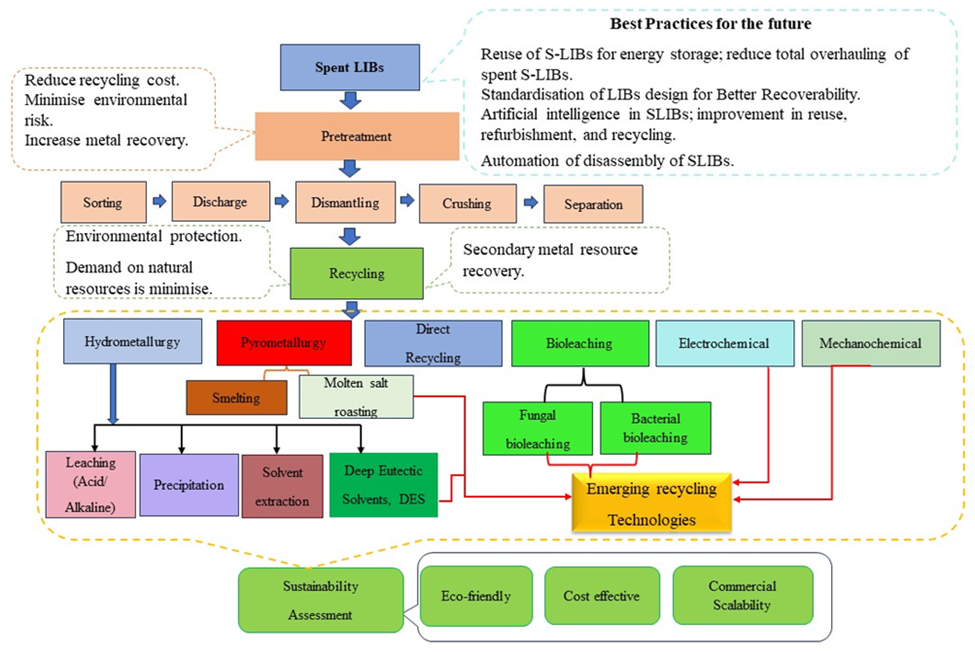Sustainable Lithium and Cobalt Recovery from Spent Lithium-ion Batteries: Best Practices for the Future. A review
Author(s): Afreh Paul, Prof. Gao Lizhen, Tetteh Recheal, Sidhoum Ali
Spent lithium-ion batteries (LIBs) are becoming increasingly common due to their widespread use in various energy-related applications. These batteries contain valuable metals such as cobalt (Co) and lithium (Li), which are in high demand and have limited long-term supply. To recover these valuable metals and avoid environmental pollution, the recycling of spent LIBs using different methods, including hydrometallurgy, pyrometallurgy, direct recycling, and biohydrometallurgy (bioleaching), has been widely explored. Each method has advantages and disadvantages in terms of cost-effectiveness and the recovery of Co and Li from spent LIBs. Thus, a comprehensive and critical analysis of recent studies on the performance of different recycling methods for the extraction of Co and Li from spent LIBs is necessary for the development of novel and practical strategies for effective metal extraction. Specifically, this review focuses on the current advancements in the application of existing recycling methods and emerging recycling technologies in terms of sustainability, efficiency, cost-effectiveness, and environmental friendliness for the recovery of Co and Li from spent LIBs. This review also identifies standardization of LIB design, automation of disassembly of SLIBs and involvement of artificial intelligence/machine learning in the recycling process as some of the best practices for the sustainable recovery of valuable metals from SLIBs and the minimization of pollution from SLIBs.



